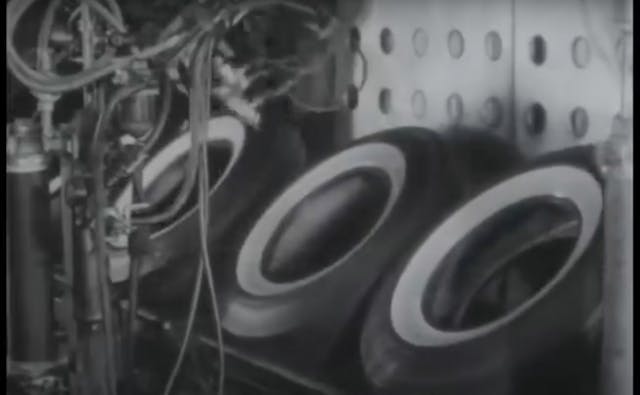Media | Articles
How did they make tires in 1961? Essentially, how they make them now
Tires are arguably one of the most critical parts of your car. Put on bad ones, and you compromise not only performance but also safety. You might assume that a component so critical is built differently now than, say, it was 50 years ago, but the basic ingredients and design of a tubeless tire really haven’t changed much since the ’60s. (Rubber compounds have evolved significantly, however.) We found a promotional video outlining how BFGoodrich made its 1961 Silvertown tires, and it’s a great primer for understanding what is going on with the four critical rubber pieces on your car, vintage or modern.
A tubeless tire isn’t that intricate, but its anatomy is more complex than you might assume at first glance. Of course, there is tread and sidewall, but underneath those lie belts of steel or other reinforcing material. The inner edge of the tire is the bead and is reinforced with steel rings to ensure that it retains its shape and seals against the wheel. Each part is critical to keeping a vehicle traveling safely at the speeds of which modern vehicles are capable.
One of the key differences between the tires you see in this film and the ones that are (likely) on your car is the configuration of the reinforcing belting. As the hosts points out, each of the four layers is rotated 90 degrees compared to the one underneath it. This design is where the term “bias ply” comes from. The next leap in tire tech arranged those reinforcing plies in a radial fashion around the tire circumference and also directly from one bead to the other under the tread.
Radial tires are typically smoother, quieter, and have better traction compared to a bias-ply tire; hence why bias ply tires have fallen from popular use—with the exception of period-correct restorations, trailers, or heavy equipment. Of course, the rubber compounds and manufacturing techniques have changed drastically since this 1961 film was produced, but at the end of the day tires are still built for the same jobs with the same basic ingredients.
Marketplace
Buy and sell classics with confidence















